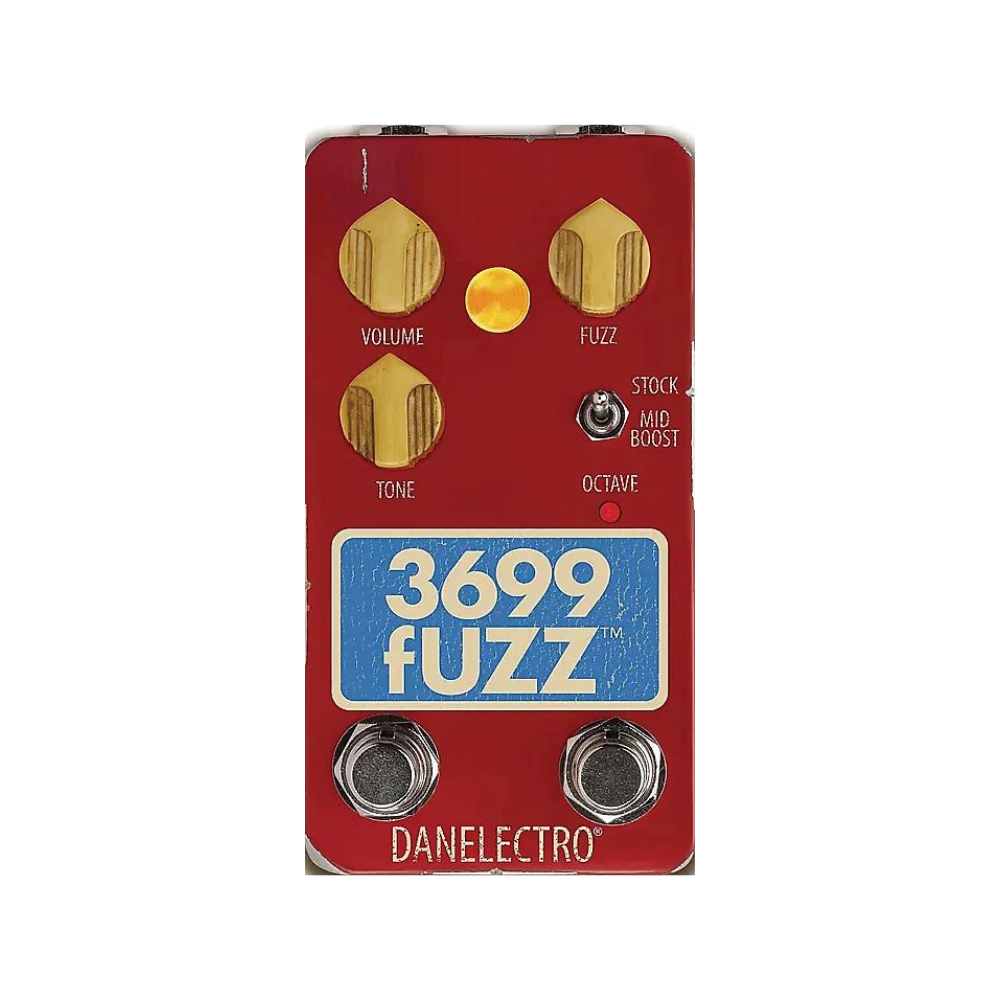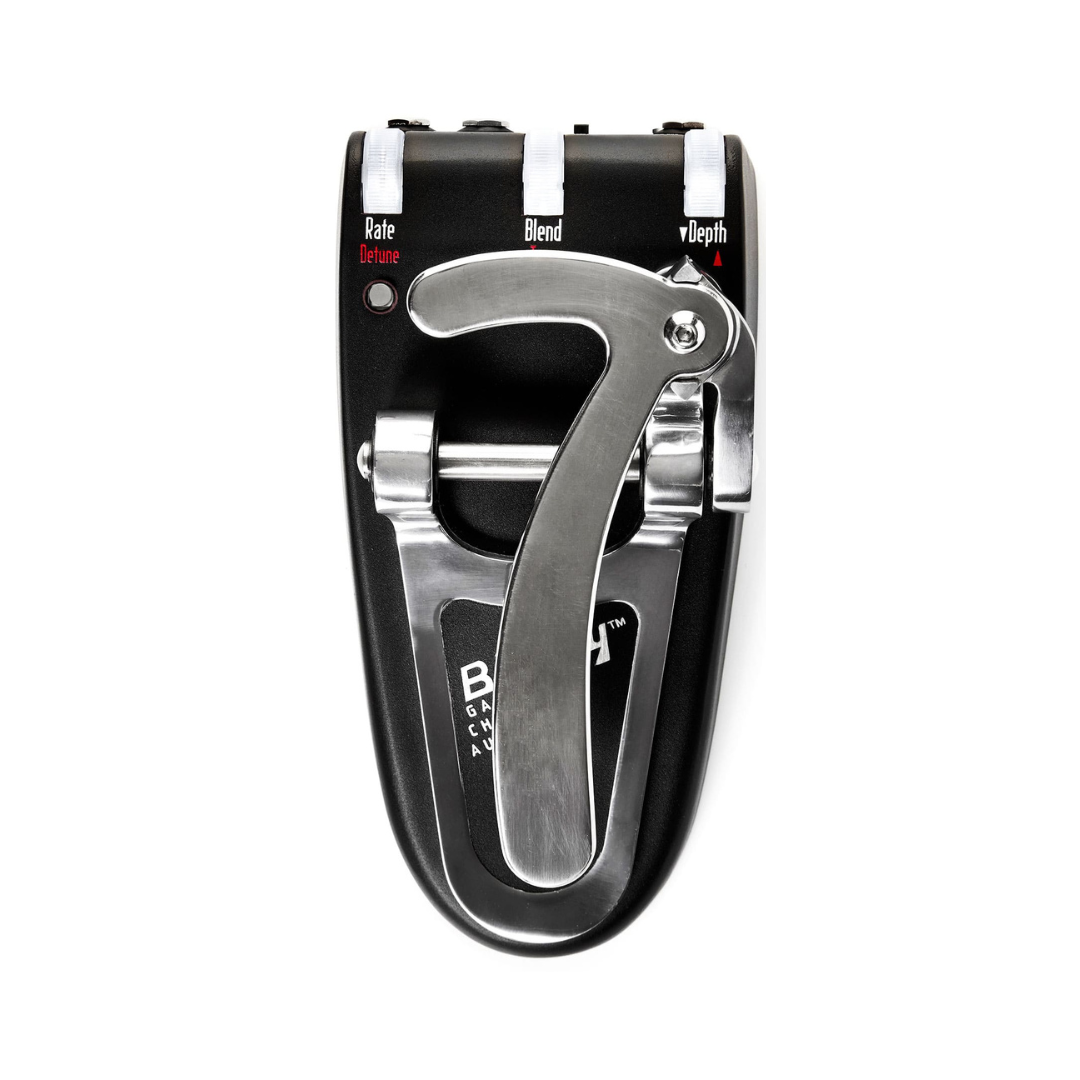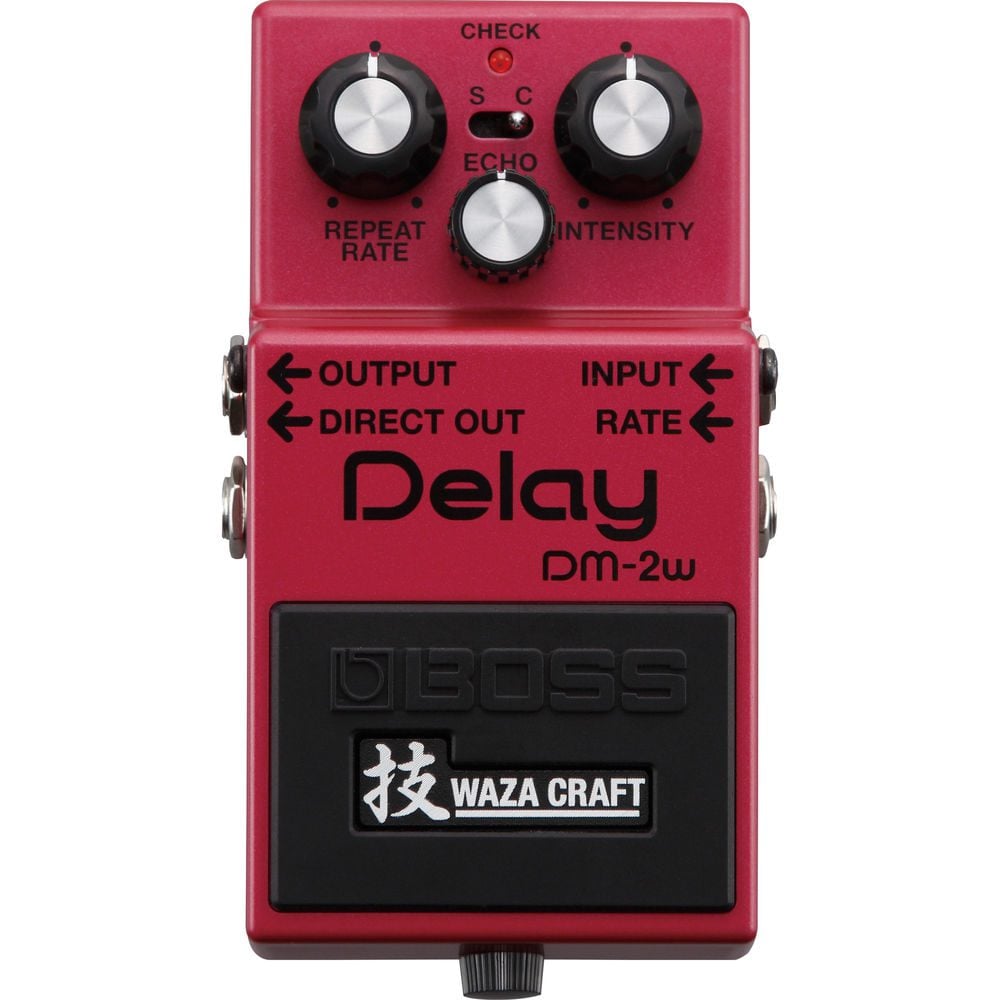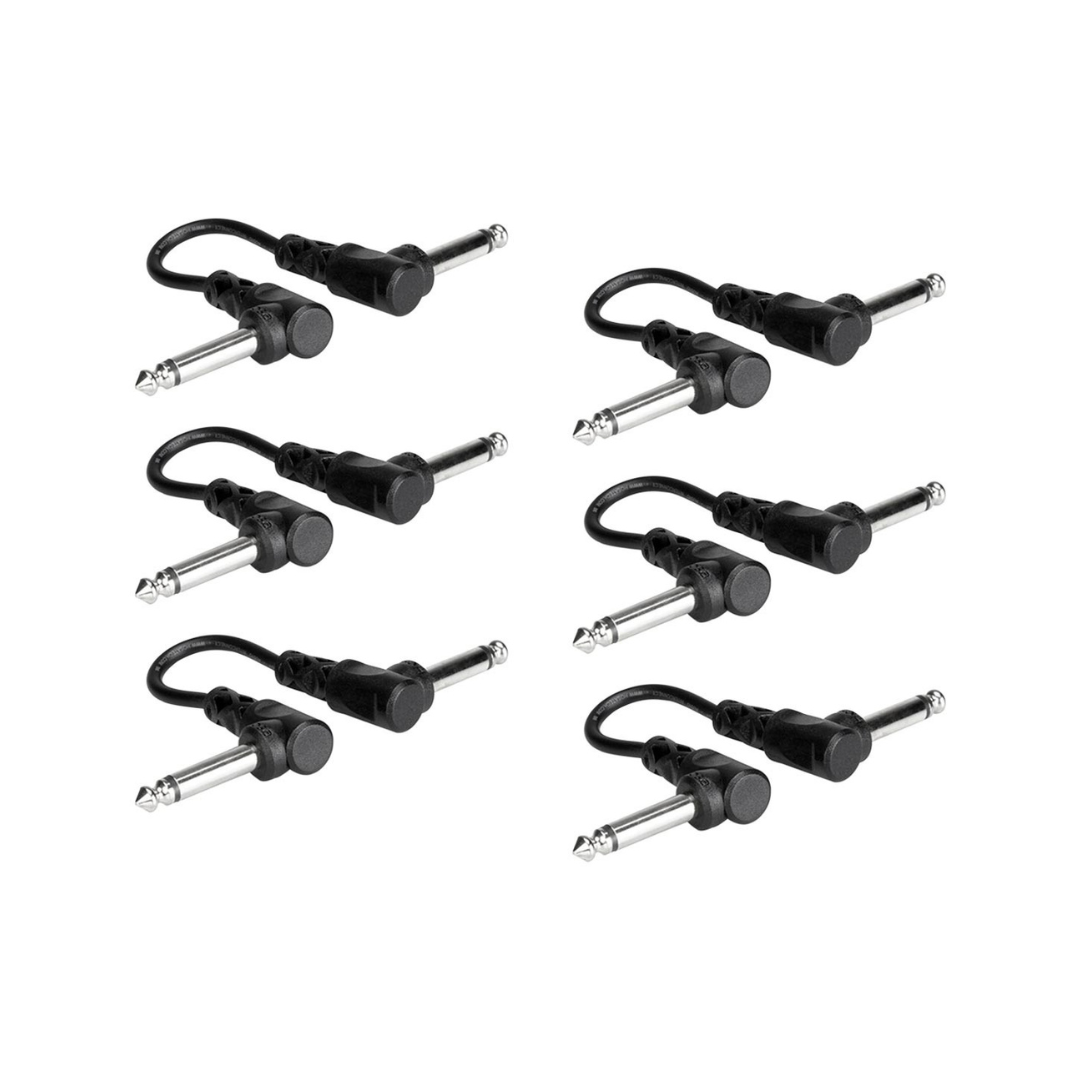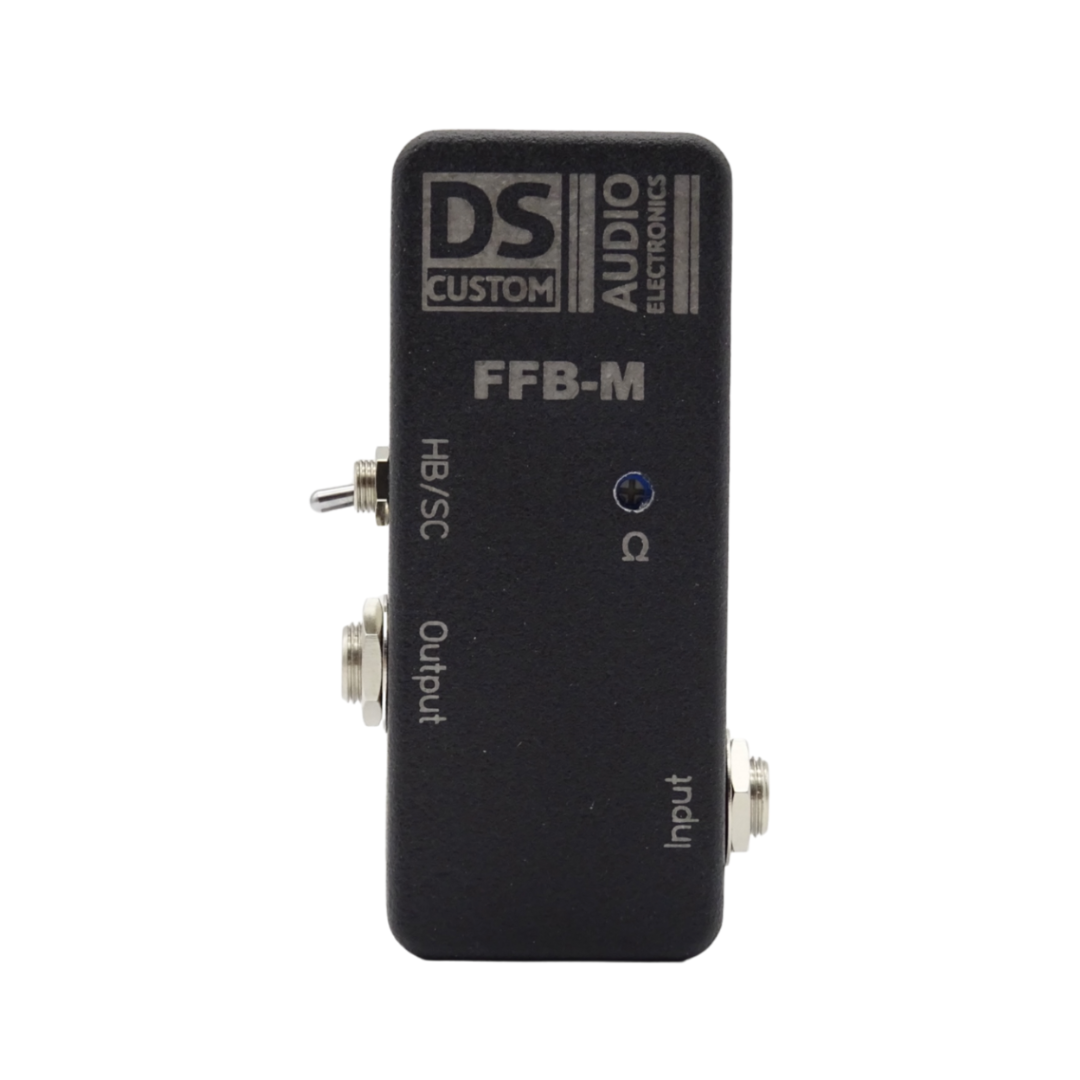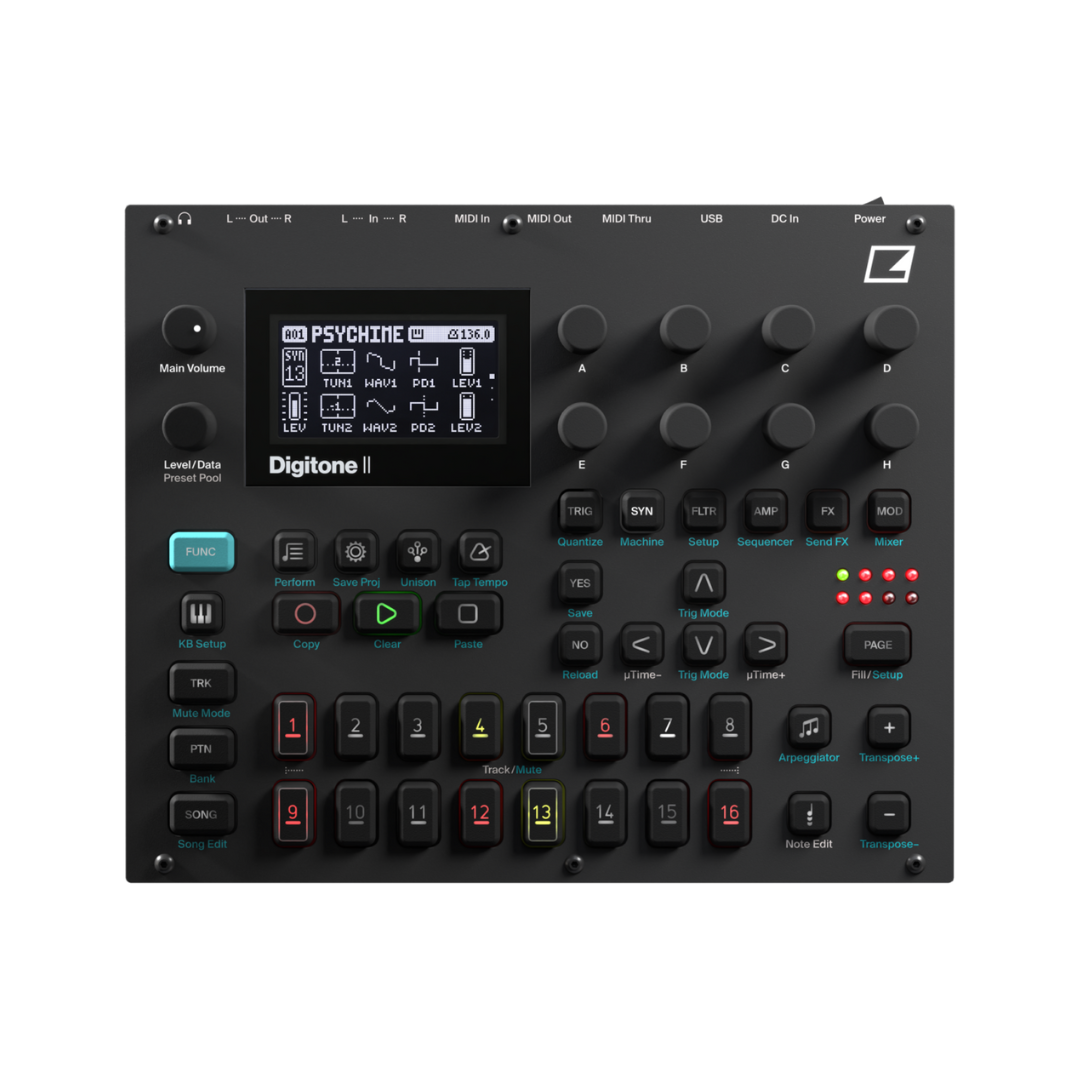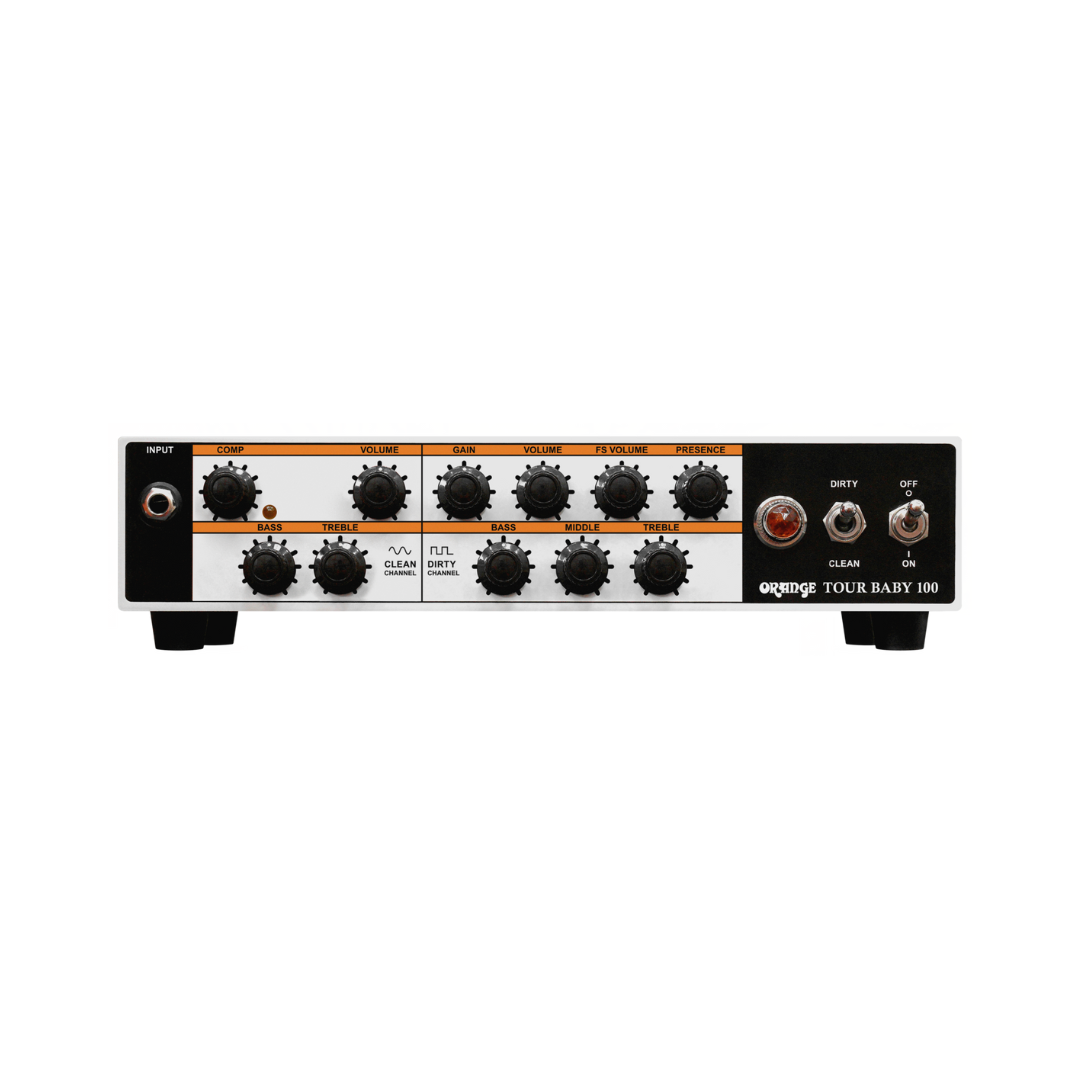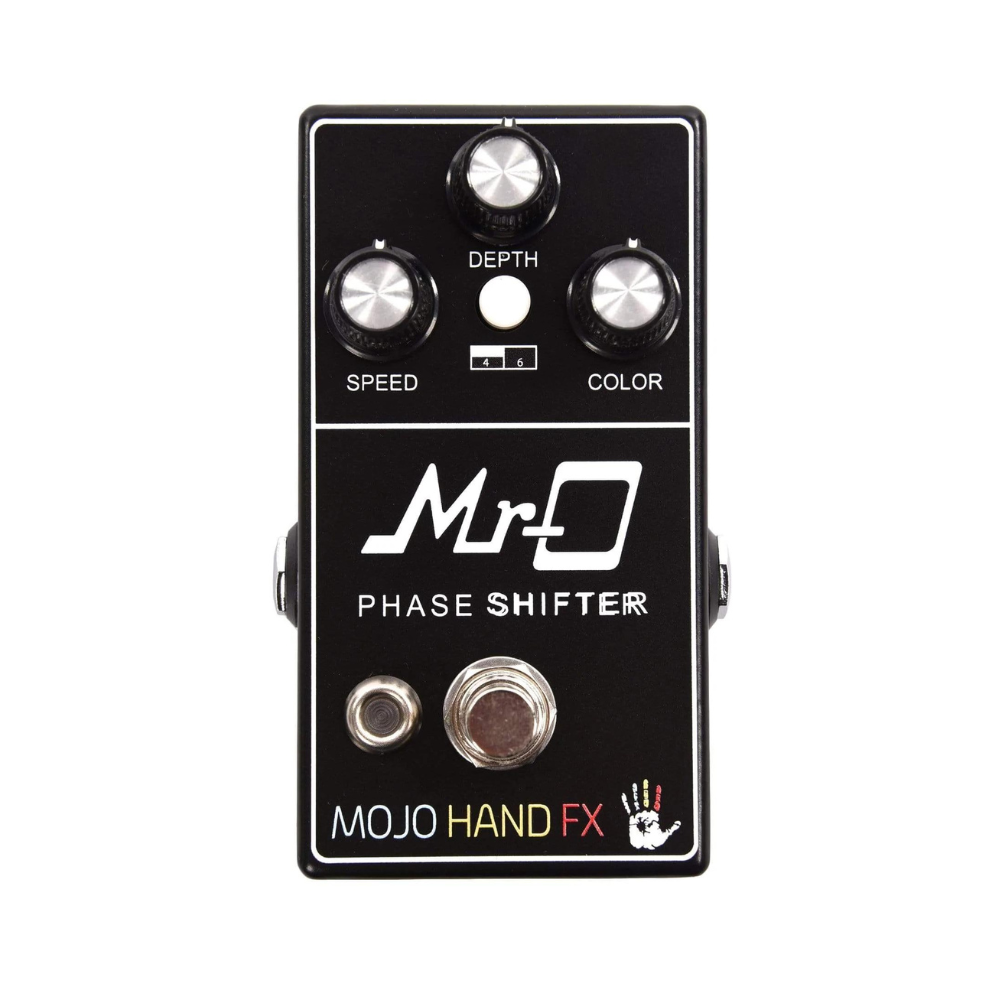3699 fUZZ
Danelectro® owner Steve Ridinger created the FOXX® pedal line in the 1970’s. Steve priced the FOXX® Tone Machine® at $49. Today originals sell for $600+. Now Steve brings back his original circuit with some important tweaks. He made the octave way more pronounced, the octave is foot switchable, the tone is warmer, and there is a “mids boost” toggle that counteracts the mid cut of the original pedal. Velvet tone for sure!
New Take on the Tone Machine, the 3699
Danelectro clearly didn’t rely on pedigree in executing this design. It’s burly, refined, sounds authentically vintage, and hits with a wallop in the same spot where those originals left beautiful scars years ago.
Cut You Down to Size
The original Tone Machine was an odd bird. For starters, the enclosure was literally fuzzy. It was also big and curiously configured—with side-mounted knobs and an octave toggle, and a single, lonely footswitch on top. The 3699 reduces the footprint of the original. But it also adds two features that did not appear on the Tone Machine: a dedicated footswitch for the octave effect and a toggle that switches between the standard fuzz voice and a more mid-forward mode.
The 3699’s footswitches are close together—less than 1 1/2″ on center—so you have to take care not to bypass the pedal entirely when selecting the octave. But the footswitch is a practical improvement over the toggle that performed the same function on the original. Elsewhere, output volume, fuzz, and tone controls are straight-ahead and self explanatory.
You’re just as likely to fall hard for the fundamental fuzz tone sans octave.
Brings the Boom
Though the 3699 is an octave fuzz, you’re just as likely to fall hard for the fundamental fuzz tone sans octave. It’s more than a little reminiscent of a Big Muff, with a compressed foghorn-like attack, honey-smooth sustain, and enough sting and definition on top to create perceptible string-to-string separation. Full chords sound surprisingly articulate.
As with many hot silicon fuzzes, you can’t readily transform the 3699 into an overdrive with guitar volume attenuation. It’s fuzzy down at the lowest ranges of its gain, and just gets more menacing and bright as you add gain. But you can coax dank, swampy, and complex sounds that bridge overdrive and fuzz by attenuating guitar tone and volume—achieving settings that can make a Telecaster sound like a Les Paul neck humbucker driving a tweed Deluxe. The tone control is the more effective means of re-shaping the fuzz’s personality, and there are many shades of buzz—from smoky and blunted to searing and metallic.
The octave effect itself dovetails beautifully with the fundamental tones. And at times the shift between straight fuzz and octave fuzz at lower tone and gain levels can be surprisingly subdued. On the other hand, the 3699 octave fuzz can generate punchy, harmonically whole, and sustain-rich chords, where other octave fuzzes collapse into chaos. Conjuring the most intense octave sounds is typically a function of adding top end, and there is plenty of range in the tone control to transform your tone from hazy to hair-singeing. At these higher-end tone levels, the 3699 retains its essential cohesiveness, but takes on an absolutely manic edge. Playing lead lines against droning strings at the 10th fret or higher can even create clanging ring modulated sounds.
The Verdict
The 3699 won’t back you into a creative corner. The fundamental fuzz sounds so good that you might make it your number one. And with the octave in the mix, it’s softer around the edges—even at extreme gain and tone settings—than other Tone Machine clones I’ve heard. To me that’s a good thing. It lends the 3699 a more controlled and predictable feel without surrendering its most feral side—almost as if you were sending your guitar via direct injection to a desk and cranking the gain on the console. To call the 3699 completely civilized might be a reach. At many settings, it can be downright thuggish. But its range of tones add up a multitude of musical options—making it one of the most flexible octave fuzzes you’ll ever play.




